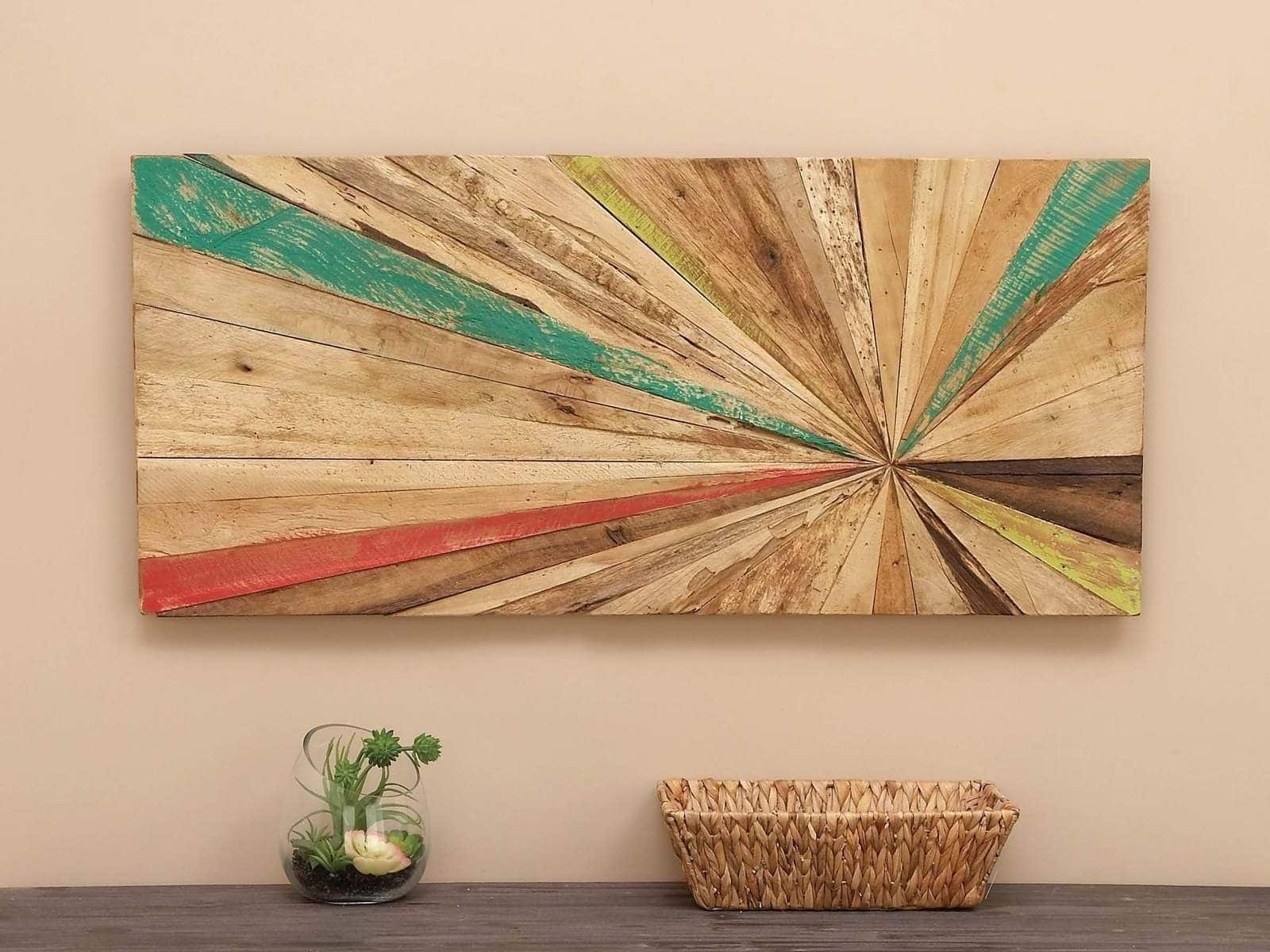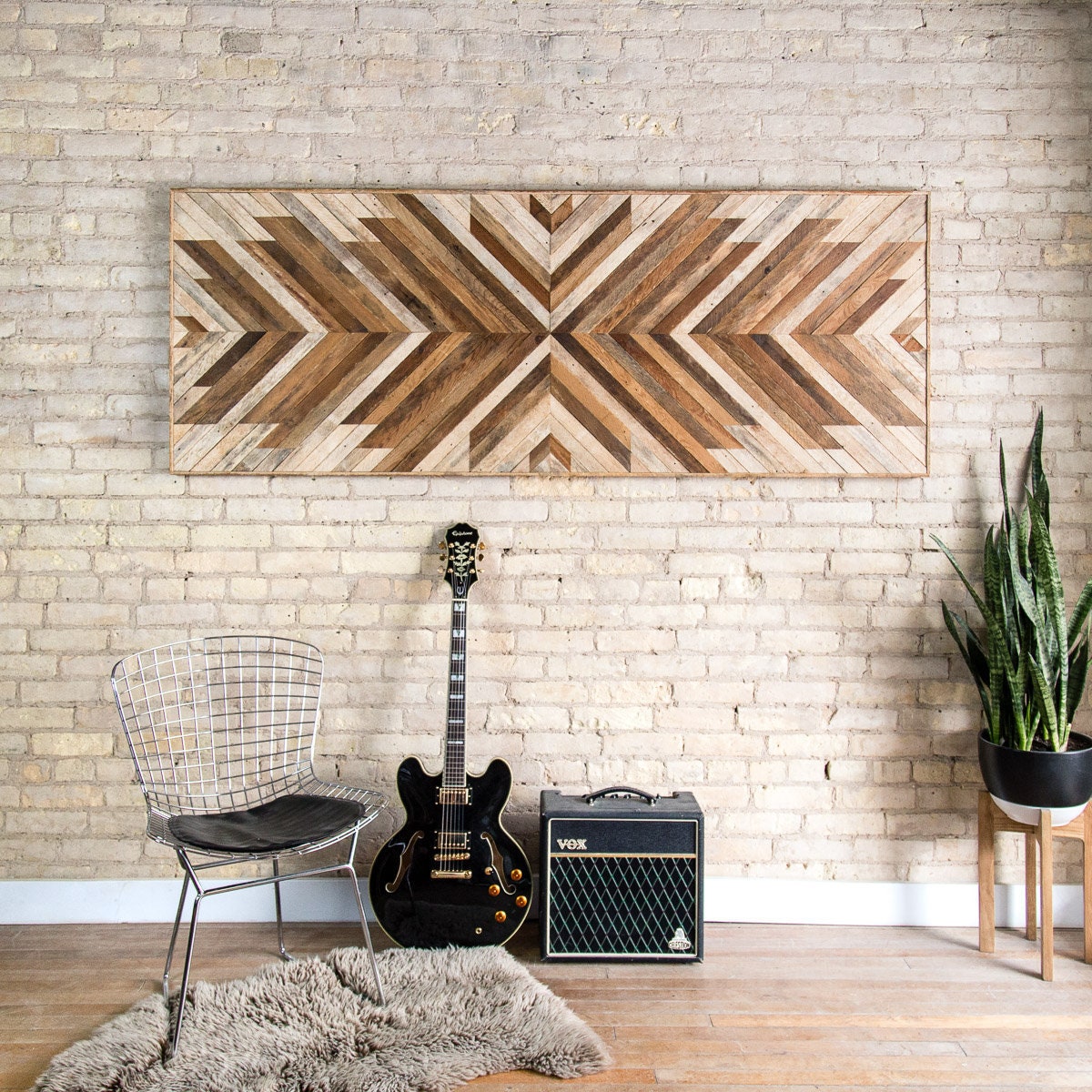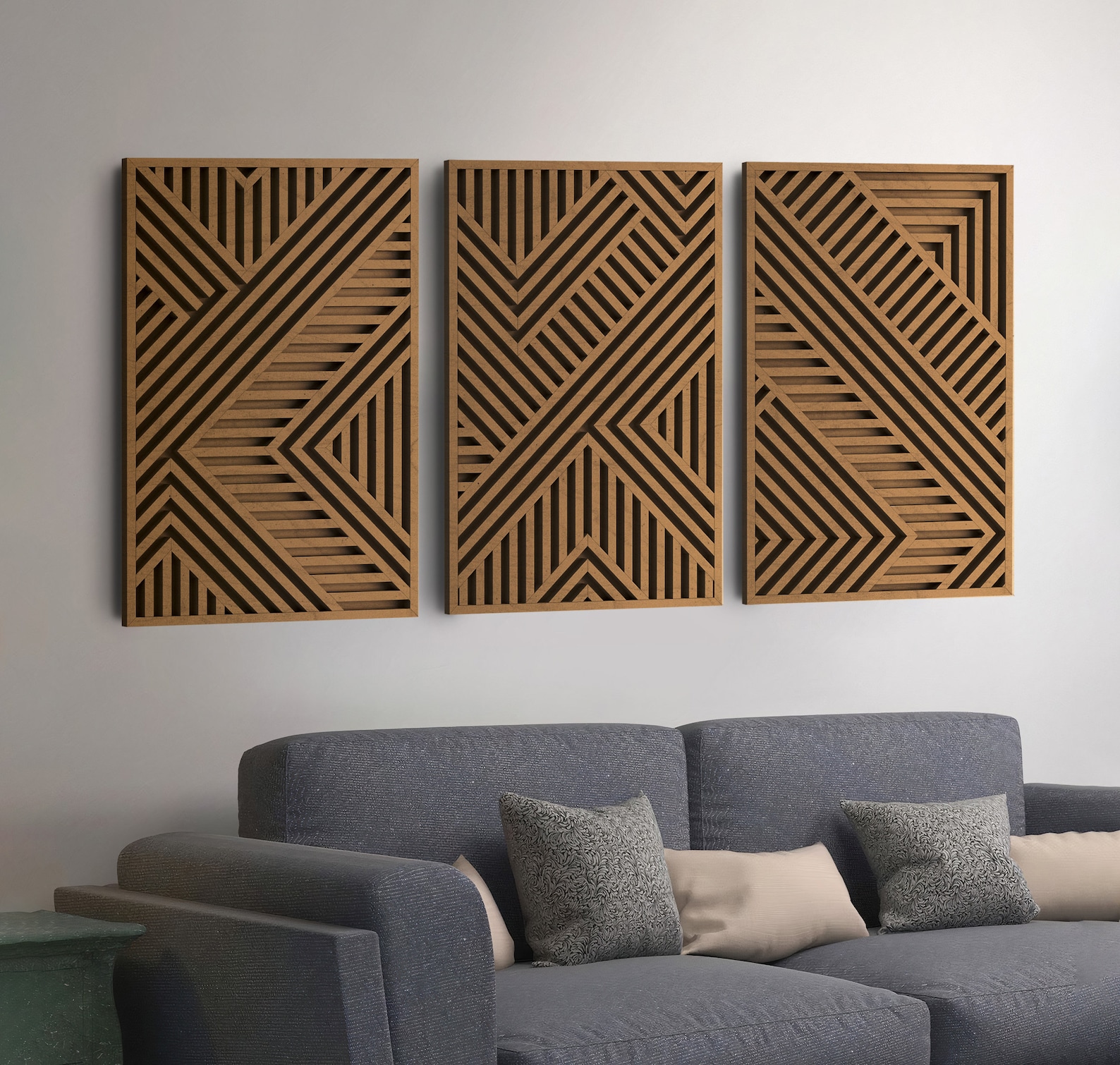Design Elements and Style Exploration: Wood Wall Art

Wood wall art embraces a diverse array of design aesthetics, ranging from rustic and organic to sleek and contemporary. The unique grain patterns, textures, and finishes of wood lend themselves to a wide range of artistic expressions.
Impact of Wood Grain, Texture, and Finishes
The natural grain of wood adds depth and character to wall art, creating intricate patterns that vary with the species and cut of the wood. Knots, burls, and other imperfections can become focal points, adding a touch of rustic charm or organic beauty.
Guys, are you tired of your plain white walls? Let’s spice things up with some wood wall art! These rustic and natural pieces can add warmth and character to any room. And if you’re an anime fan, you can’t miss out on the latest luffy wallpaper.
Picture this: your favorite pirate captain, Luffy, staring down at you from your wall, ready to inspire you on your daily adventures. But don’t forget, wood wall art is not just for anime lovers; it’s a versatile addition that complements any decor style.
The texture of wood also plays a significant role in the overall appearance of wall art. Smooth, polished surfaces exude a refined elegance, while rough-hewn or distressed finishes convey a more rugged, weathered aesthetic.
If you’re looking for a way to add some warmth and character to your home, wood wall art is a great option. It’s versatile and can be used in any room, from the living room to the bedroom. And if you’re looking for a way to add a pop of color, you can always pair your wood wall art with some purple aesthetic wallpaper.
The combination of wood and purple will create a warm and inviting space that you’ll love spending time in.
Finishes, such as stains, paints, or lacquers, can further enhance the visual impact of wood wall art. Dark stains accentuate the grain, creating a dramatic contrast, while light stains preserve the natural color of the wood, highlighting its subtle variations. Paints can add vibrant hues, transforming wood wall art into colorful masterpieces.
Complementing Interior Design Concepts
Wood wall art effortlessly complements a variety of interior design concepts. In rustic settings, it harmonizes with natural materials like stone and leather, creating a warm and inviting ambiance. In modern spaces, sleek and minimalist wood wall art adds a touch of organic warmth, balancing the clean lines and sharp angles.
Contemporary interiors benefit from the versatility of wood wall art, as it can blend seamlessly with both neutral and bold color schemes. Eclectic spaces embrace the eclectic nature of wood wall art, where pieces from different styles and eras coexist in a harmonious display.
Types and Applications

Wood wall art is a versatile and timeless addition to any space. From intricate carvings to stunning panels, wood wall art offers a wide range of styles and applications that can transform any room.
Wood wall art can be functional and decorative, serving as a way to display artwork, add warmth and texture to a space, or create a focal point. In residential settings, wood wall art can be used to create a cozy and inviting atmosphere, while in commercial settings, it can add a touch of sophistication and elegance.
Types of Wood Wall Art
- Carvings: Intricate and detailed carvings can depict a variety of subjects, from animals and plants to abstract designs.
- Panels: Wooden panels can be used to create a variety of effects, from geometric patterns to landscapes.
- Mosaics: Wood mosaics are made up of small pieces of wood that are arranged to create a larger image or design.
- Sculptures: Three-dimensional wood sculptures can add a unique and dramatic touch to any space.
Applications of Wood Wall Art
Wood wall art can be used in a variety of applications, including:
- Wall art: Wood wall art can be used to display artwork, from paintings to photographs.
- Focal point: A large or eye-catching piece of wood wall art can be used to create a focal point in a room.
- Warmth and texture: Wood wall art can add warmth and texture to a space, making it feel more inviting and cozy.
- Privacy: Wood wall art can be used to create privacy screens or dividers.
Sustainability and Environmental Considerations

Yo, let’s talk about the green side of wood wall art. It’s not just about aesthetics, it’s about being eco-friendly too!
Sustainable practices are key in the production of wood wall art. Artists and manufacturers are using reclaimed or responsibly sourced wood, reducing the environmental impact. Reclaimed wood gives old timber a new life, while responsibly sourced wood ensures that trees are harvested in a sustainable manner.
Environmental Benefits, Wood wall art
Using reclaimed or responsibly sourced wood in wood wall art has numerous environmental benefits. It reduces deforestation, preserves natural habitats, and promotes responsible consumption. By choosing eco-friendly wood wall art, you’re not only decorating your home but also contributing to a greener planet.